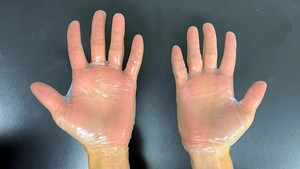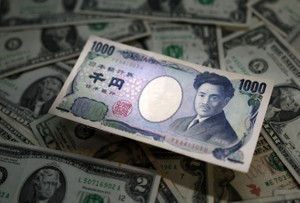THE ASAHI SHIMBUN
September 25, 2023 at 17:45 JST
In a break from tradition, Minoru Kihara, the new defense minister, didn’t meet with Okinawa Governor Denny Tamaki during his first visit to Okinawa after assuming office.
“I could not visit the main island of Okinawa due to my limited schedule,” Kihara told reporters on Sept. 24, when he visited Miyakojima and Ishigakijima islands, part of the Nansei island chain in Okinawa Prefecture.
The ongoing discord between the central government and the Okinawa prefectural government over relocating a U.S. military base within the prefecture has once again underscored the deep rift between the two sides.
Kihara chose Okinawa Prefecture as the first destination for a series of visits after taking up his position to demonstrate his stance on strengthening the defense of the Nansei island chain, with China in mind.
“As strengthening our defense systems on the Nansei Islands is an urgent issue, I wanted to check the site first with my own eyes,” Kihara said, explaining why he gave priority to the two islands.
The defense minister arrived in the prefecture on Sept. 24 and inspected the Self-Defense Forces troops stationed in the cities of Miyakojima and Ishigaki. He then held talks with both mayors.
In Miyakojima, Kihara laid flowers near the site where an SDF helicopter carrying 10 personnel crashed into the waters off the island in April.
DEEPENING RIFT
A senior Defense Ministry official acknowledged the importance of Kihara and Tamaki meeting immediately after the defense minister took office.
According to several sources, the ministry initially sought a meeting between the two.
The Okinawa prefectural side was also preparing a written request to be submitted to Kihara, but Tamaki had just returned on Sept. 23 from attending a United Nations meeting in Switzerland, and the scheduling couldn’t be worked out, the sources said.
“I would like to create an opportunity (to exchange views with Tamaki),” Kihara said.
There is growing tension between the two sides over the central government’s plans to relocate U.S. Marine Corps Air Station Futenma from Ginowan to the Henoko district of Nago, both in the prefecture.
On Sept. 4, the Supreme Court ruled against the prefectural government, which had not given its approval for a construction design change to solidify the soft seabed off the Henoko coast.
On Sept. 19, the central government recommended that Tamaki approve the design change.
The government may issue an even stronger directive seeking approval.
Given such circumstances, both sides decided it would be inadvisable for Kihara and Tamaki to meet at this time, a senior ministry official said.
However, it’s rare for a new defense minister visiting Okinawa Prefecture for the first time to skip a meeting with Okinawa’s governor.
There have only been two occasions where such a meeting has not been held since the ruling Liberal Democratic Party returned to power under the second Shinzo Abe administration.
In 2013, Itsunori Onodera, then-defense minister, met with a deputy Okinawa governor of the time while the governor recuperated from an illness.
In 2022, Yasukazu Hamada, the defense minister at the time, visited Okinawa’s main island the following week after inspecting SDF troops on Yonagunijima island, and he met with Tamaki.
FOCUS ON DEFENSE
There is a sense of caution in Okinawa Prefecture over Kihara’s actions. Many have concerns about the central government's defense policy that includes the ministry’s “southwest shift,” a strategy to bolster the SDF in the Nansei Islands to keep an eye on China’s increasing maritime activities in the area, along with relocating the U.S. military base.
A senior prefectural official spoke about Kihara’s involvement in formulating the revisions for three key national security documents in December as a member of the ruling party’s working-level talks.
“I perceive Kihara as someone who is intensely focused on enhancing defense capabilities,” the senior official said. “It remains to be seen whether he can understand Okinawa’s historical background and its different sensibilities compared to the main island of Japan.”
Another prefectural official said, “Discussions could focus only on the Taiwan contingency, leaving the will of the Okinawan people behind.”
The government is rushing to ramp up the SDF’s presence in Okinawa Prefecture, where 70 percent of the United States’ military facilities in the country are concentrated.
Japan opened Ground SDF garrisons on Yonagunijima island in 2016, on Miyakojima island in 2019 and on Ishigakijima island in March.
The central government is considering deploying long-range missiles capable of striking enemy bases, including ballistic missile launch sites, amid growing concerns among residents that the prefecture “could become a target” for other countries.
(This article was written by Nobuhiko Tajima and Taro Ono.)




















Stories about memories of cherry blossoms solicited from readers
Cooking experts, chefs and others involved in the field of food introduce their special recipes intertwined with their paths in life.
A series based on diplomatic documents declassified by Japan’s Foreign Ministry
A series on the death of a Japanese woman that sparked a debate about criminal justice policy in the United States
A series about Japanese-Americans and their memories of World War II
Here is a collection of first-hand accounts by “hibakusha” atomic bomb survivors.